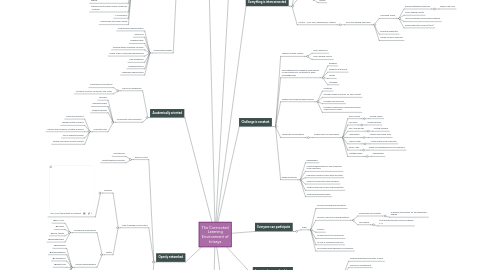
1. Interest-powered
1.1. Blogs
1.1.1. The Amber of the Moment
1.1.1.1. The Amber of the Moment
1.1.2. Multimodal Me
1.1.2.1. Multimodal Me
1.1.3. Tasles from an Edugeek
1.1.3.1. tales from an edugeek
1.1.4. Teachers as Writers
1.1.4.1. About - Teachers as Writers
1.2. Specific sub groups/pages on Facebook
1.2.1. NSW Senior English
1.2.1.1. Extension 1 and 2
1.2.1.2. Year 12 Extension 2
1.2.1.3. Standard English
1.2.1.3.1. HSC Standard English Module B: Curious Incident
1.2.1.3.2. Craft of Writing (Standard) - NSW teacher workgroup
1.2.1.4. Reading to Write NSW Teacher Workgroup
1.2.1.5. Advanced English
1.2.1.5.1. Year 12 Advanced Module A
1.2.1.5.2. Craft of Writing (Advanced) - NSW teacher workgroup
1.2.1.5.3. HSC Advanced English Teachers NSW
1.2.1.5.4. Narratives that Shape Our World NSW Advanced English
1.2.1.6. Texts and Human Experiences
1.2.2. English Teaching Australia
1.2.3. NSW Literacy Network
1.2.4. Australian Association for the Teaching of English
1.2.5. Improving Writing with Mentor Sentences - Australia
1.2.6. IF Conference
1.2.7. Shakespeare Discussion Group
1.3. Conversation threads
1.3.1. New syllabus implementation
1.3.2. Resources
1.3.3. Engaging texts
1.3.4. Working within contextual confines
1.3.5. Higher School Certificate requirements
1.3.6. New workplaces
1.3.7. Changing sectors
1.3.8. Leadership opportunities
2. Academically oriented
2.1. Input from Authorities
2.1.1. Professional Associations
2.1.2. University Doctors, Professors, and Tutors
2.2. Professional communication
2.2.1. Teachers
2.2.2. Retired teachers
2.2.3. Student teachers
2.2.4. Corporate staff
2.2.4.1. Curriculum Advisors
2.2.4.2. Teacher Quality Advisors
2.2.4.3. Literacy and Numeracy Strategy Advisors
2.2.4.4. NESA Inspector English
2.2.4.5. English Curriculum Project Officers
3. Openly networked
3.1. Ease of access
3.1.1. Smart device
3.1.2. Laptop/desktop computer
3.2. Links to broader communities
3.2.1. Pinterest
3.2.1.1. ETA_NSW (darcy1968) on Pinterest
3.2.2. Twitter
3.2.2.1. Professional Associations
3.2.2.1.1. @ETA_NSW
3.2.2.1.2. @ETAQld
3.2.2.1.3. @TATE_tweets
3.2.2.1.4. @englishteachers
3.2.2.2. Fellow English teachers
3.2.2.2.1. @madiganda
3.2.2.2.2. @AustralasianEdu
3.2.2.2.3. @LukeBartolo1
3.2.2.2.4. @whartonag
3.2.2.2.5. @intoeng
3.2.2.2.6. @TeamEnglishOz
3.2.2.2.7. @lisaedwards02
3.3. Connection to NSW ETA Platforms
3.3.1. Instagram
3.3.1.1. ETA NSW (@etansw) • Instagram photos and videos
3.3.2. Twitter
3.3.2.1. ETA NSW (@ETA_NSW) | Twitter
3.3.3. NSW ETA website
3.3.3.1. Home - English Teachers Association NSW
4. Shared purpose
4.1. Collaboration
4.2. Support
4.3. Contribution to pool of knowledge
4.4. Reciprocity
4.5. Community
4.6. Cross sector
4.6.1. Independent
4.6.2. Catholic
4.6.3. NSW DoE
4.6.4. + other states and territories
4.7. Personal learning network
5. Peer-supported
5.1. Early career teachers + experienced teachers
5.2. Mentoring relationships on and offline
5.3. Like-minded individuals
5.4. 'Virtual staffroom'
5.4.1. In-jokes
5.5. Respond to change
5.5.1. New syllabus implementation
5.5.1.1. Stage 4
5.5.1.2. Stage 5
5.5.1.3. Stage 6
5.5.2. Support during bushfire season
5.5.2.1. Colleagues couldn't access materials
5.5.2.2. School loss
5.5.3. Support during school closure due to Covid 19
5.5.3.1. Resources appropriate for online usage
5.5.3.2. Advice on assessment modification
5.5.3.3. Technical support
5.5.3.3.1. Google Classroom
5.5.3.3.2. Office365 Teams
5.5.3.3.3. Zoom
6. Everything is interconnected
6.1. Conferences
6.1.1. NSW English Teachers' Association Annual Conference
6.1.2. AATE/IFTE Annual Conference
6.1.3. Extension 1 Student Day
6.1.4. Extension 2 Student Webinar
6.2. Social media
6.2.1. Pinterest
6.2.1.1. Resource sharing
6.2.2. Twitter
6.3. Sectors - NSW DoE, Independent, Catholic
6.3.1. NSW DoE English Staffroom
6.3.1.1. Office365 Teams
6.3.1.1.1. English Statewide Staffroom
6.3.1.1.2. GPHS English Faculty
6.3.1.1.3. Joint Professional Learning and network
6.3.1.1.4. Penrith Education Alliance (PEA)
6.3.1.2. English eNewsletter
6.3.1.3. Adobe Connect Webinars
7. Challenge is constant
7.1. Support reaches schools
7.1.1. GPHS Executive
7.1.2. GPHS English Faculty
7.2. Encouragement to engage in development of own platform to contribute to wider knowledge base
7.2.1. Blogging
7.2.2. Facebook sub-group
7.2.3. Twitter
7.2.4. Instagram
7.3. Positive reinforcement when sharing
7.3.1. Gratitude
7.3.2. Members adapt resources for their context
7.3.3. Members use resources
7.3.4. Members create similar resources because original was so useful
7.4. Intellectual conversations
7.4.1. Trusted voices in scholarship
7.4.1.1. Darcy Moore
7.4.1.1.1. George Orwell
7.4.1.2. Mel Dixon
7.4.1.2.1. Student writing
7.4.1.3. Kerr-Jane Bourke
7.4.1.3.1. Writing teachers
7.4.1.4. Luke Bartolo
7.4.1.4.1. Stage 6 Prescribed Texts
7.4.1.5. Imelda Judge
7.4.1.5.1. Virtual reality in the classroom
7.4.1.6. Karen Yager
7.4.1.6.1. Rigour and engagement in the classroom
7.4.1.7. Matthew Brown
7.4.1.7.1. Shakespeare
7.5. Building capacity
7.5.1. Gatekeepers
7.5.2. Meeting requirements of new syllabuses more effectively
7.5.3. Exploring a range of topic areas and texts
7.5.4. Support for Executive staff members
7.5.5. Support with new syllabus implementation
7.5.6. Supporting aspiring leaders
8. Everyone can participate
8.1. Why?
8.1.1. To build a professional reputation
8.1.2. To build a Personal Learning Network
8.1.2.1. Professional Associations
8.1.2.1.1. Australian Association for the Teaching of English
8.1.2.2. Sub-groups
8.1.2.2.1. NSW English teachers resource sharing 7-12
8.1.3. Altruism
8.1.4. To give back to the community
8.1.5. To save a colleague some time
8.1.6. To provide honest appraisal of businesses
9. Learning happens by doing
9.1. Contributions in form of resources/advice
9.1.1. Programming/resourcing units of work
9.1.2. Classroom management
9.1.3. Scope and Sequence
9.1.4. Texts
9.1.5. Context specific advice
10. Production-centred
10.1. Sub-groups
10.1.1. NSW English Teachers' Association
10.1.2. English Book Reviews for Educators
10.1.3. Craft of Writing (Advanced) - NSW English teacher workbook
10.2. Individual blogs
10.2.1. Resource sharing
10.2.2. Reflection on teaching
10.3. Resource creation
10.3.1. Google Docs
10.3.2. Office365
10.4. Resource curation
10.4.1. Blog
10.4.2. Twitter #TeamEnglishOz
10.4.3. Google Docs
10.4.3.1. GPHS English Faculty
10.4.3.2. Botany English Curriculum Network
10.4.4. Facebook files
10.4.4.1. Units of work
10.4.4.2. Relevant articles
10.4.4.3. Student booklets
10.5. Posts
10.5.1. Recommendations
10.5.1.1. Books for holiday reading
10.5.1.2. Books for a particular stage
10.5.1.3. Reding lists to support students
10.5.1.4. Books that would be useful in a professional library
10.5.1.5. Supporting students as writers
10.5.1.5.1. New HSC Module: The Craft of Writing
10.5.1.5.2. Books with writing prompts
10.5.1.5.3. Authors reflecting on their writing
10.5.1.5.4. Authors reflecting on reading
10.5.1.5.5. Short mentor texts
10.5.1.5.6. Short stories and compilations
10.5.1.5.7. Author reflections on writing
